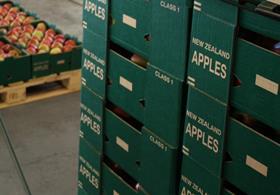
New Zealand’s pipfruit industry has doubled the value of its export trade in less than five years, with the sector showing no signs of slowing down.
Revenue from the country’s international apple and pear shipments totalled NZ$341m (US$242m) in 2012. This figure has climbed to NZ$720m (US$510m) over the 2015/16 season, with the industry exporting 19.5m cartons according to the latest figures released by Pipruit New Zealand.
The industry looks well positioned to achieving its goal of reaching NZ$1bn in exports by 2020, a somewhat ambitious target outlined at Pipfruit New Zealand’s annual conference in 2012.
“The funny thing was when we launched our growth plan in 2012, no-one believed us, not even the government or our own industry,” Pipfruit New Zealand’s business development manager Gary Jones told The Orchardist, Horticulture New Zealand’s in-house publication.
The industry is well on track to reaching its target ahead of schedule, with export revenue expected to continue growing over the coming seasons, as new plantings come into full production.
Next season’s export crop is tipped to come in at 380,000 tonnes (21.5m cartons), which would surpass the previous record of 364,000 tonnes set in 2004. The 2016/17 forecast is expected to yield NZ$800m in sales.
Export tonnages are tipped to rise 397,000 tonnes in 2017/18, before breaking through the 400,000 tonne mark in 2018/19. By the 2019/20 season, international trade is expected to be around 447,000 tonnes.
It’s not just the quantity of fruit driving up the sector’s value, with New Zealand growers continuing to transition to sweet, high-colour varieties in order to appeal to consumers in Asia, where 50 per cent of exports are now sent.
New Zealand’s domestic market currently absorbs an additional 65,000 tonnes of pipfruit on top of export volumes.






No comments yet